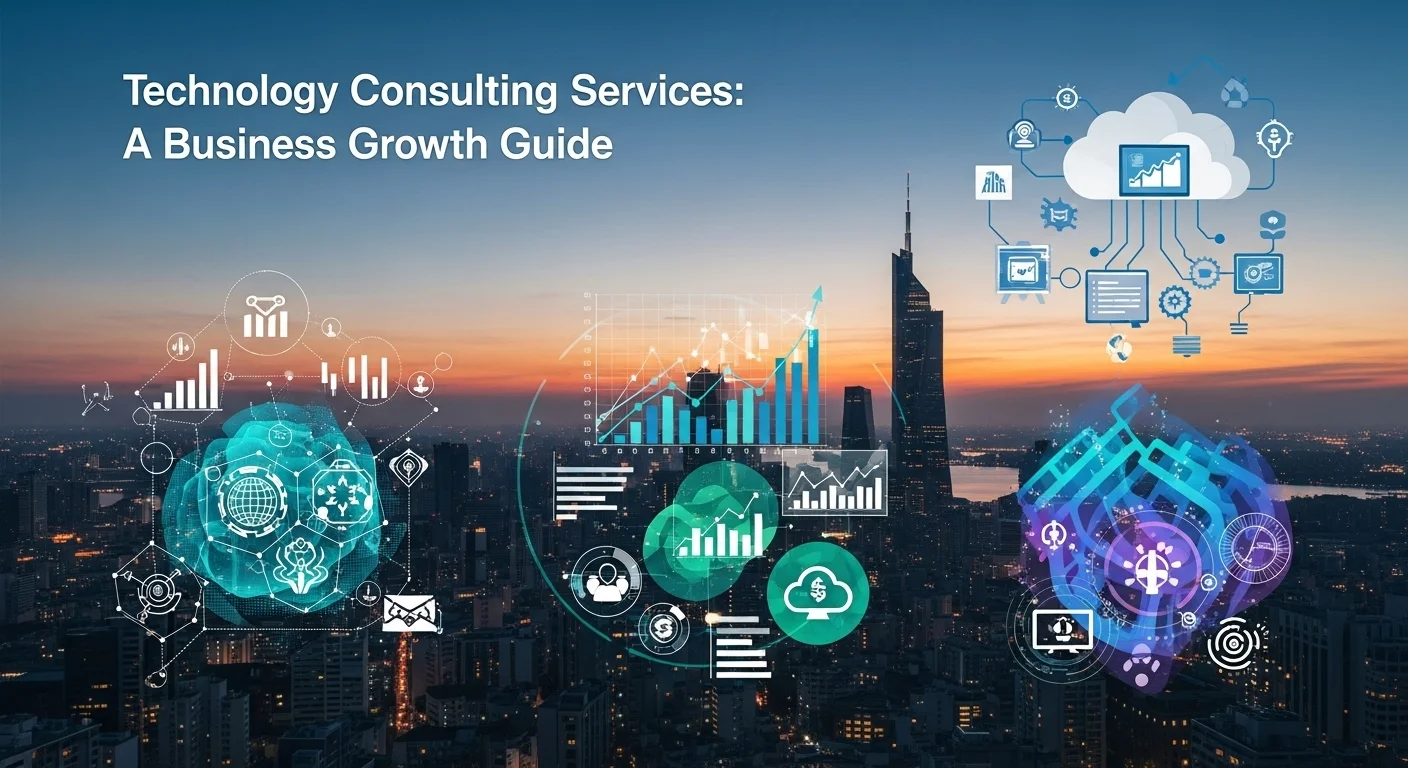IaaS PaaS: The Core of Modern Business Technology

Executive Summary
In the landscape of modern technology, understanding cloud computing is essential for any business aiming to innovate and scale. At the heart of the cloud are service models like Infrastructure as a Service (IaaS) and Platform as a Service (PaaS). This article delves into the world of IaaS PaaS, exploring the fundamental differences and synergies between them. We will analyze the core concepts, comparing IaaS v PaaS to clarify which model suits different business needs. Furthermore, we will provide a comprehensive guide on the strategic considerations and technical steps involved in an IaaS to PaaS migration, a common move for companies seeking to optimize development and reduce operational overhead. For tech enthusiasts and business leaders alike, grasping the nuances of IaaS and PaaS is no longer optional—it is a critical component of a successful digital transformation strategy. This text serves as a complete resource for navigating these powerful technology solutions, enabling better decision-making and fostering a competitive edge in the digital-first era.
Table of Contents
What is Iaas Paas and why is it important in Technology?
In today's digitally-driven world, cloud computing stands as a pillar of modern information technology, offering businesses unprecedented flexibility, scalability, and efficiency. Within this vast ecosystem, two of the most prominent and foundational service models are Infrastructure as a Service (IaaS) and Platform as a Service (PaaS). Understanding the dynamic of iaas paas is crucial for any organization looking to leverage the cloud to its full potential. These models form the building blocks for developing, deploying, and managing applications without the complexities of owning and maintaining physical hardware. The importance of iaas and paas in technology stems from their ability to abstract away different levels of IT management, allowing businesses to focus on their core competencies and innovation rather than on infrastructure logistics.
IaaS, or Infrastructure as a Service, provides the fundamental compute, network, and storage resources over the internet on a pay-as-you-go basis. Think of it as renting the virtual equivalent of a data center. With IaaS, a business can provision servers, virtual machines, storage, and networks from a cloud provider like Amazon Web Services (AWS), Microsoft Azure, or Google Cloud. The user is responsible for managing the operating system, middleware, and applications, while the provider manages the underlying physical infrastructure. This model offers the highest level of flexibility and management control over your IT resources. It is the bedrock upon which many complex cloud environments are built, making it an essential component in the iaas v paas debate.
The Core Concept of IaaS: Ultimate Control
When a business opts for an IaaS solution, it gains access to raw IT infrastructure. This includes virtual servers, storage, and networking components. The key benefit here is control. IT teams can configure and manage the environment to their exact specifications, installing custom operating systems and software. This is particularly useful for companies with specific compliance requirements or those running legacy applications that are not easily adaptable to more managed environments. The diff between iaas and paas starts with this level of control. With IaaS, you are in the driver's seat for everything above the hypervisor. This responsibility, however, also means a greater need for in-house expertise to manage security, patching, and system administration. For businesses considering a move to the cloud, a common starting point is a 'lift-and-shift' migration, which often involves moving existing applications to an IaaS environment with minimal changes. This strategy can be a stepping stone towards a more cloud-native approach, potentially leading to an iaas to paas migration in the future as applications are modernized.
Introducing PaaS: The Developer's Ally
Platform as a Service, or PaaS, takes the abstraction a level higher. In a PaaS model, the cloud provider manages not only the underlying infrastructure (servers, storage, networking) but also the operating systems, middleware, and runtime environments. This creates a ready-made platform where developers can build, test, deploy, and manage applications without worrying about the underlying system administration. It is an environment designed to accelerate the software development lifecycle. Examples of PaaS include AWS Elastic Beanstalk, Azure App Service, and Google App Engine. The core value proposition of PaaS is simplification and efficiency. Developers can focus purely on writing code and innovating, significantly reducing the time-to-market for new applications. This is a critical point in the iaas v paas comparison; PaaS prioritizes ease of use and development speed over granular infrastructure control. The synergy between iaas and paas is that PaaS is often built on top of an IaaS foundation, but it provides a managed layer that simplifies the development process immensely.
IaaS v PaaS: A Detailed Comparison of Responsibilities
To truly grasp the diff between iaas and paas, it is helpful to use the Shared Responsibility Model. Imagine a technology stack ranging from the physical data center at the bottom to the user's data and applications at the top.
- In an On-Premises model: The business manages everything – networking, storage, servers, virtualization, operating systems, middleware, runtime, data, and applications.
- In an IaaS model: The cloud provider manages the physical data center, networking, storage, and servers up to the virtualization layer. The customer manages everything from the operating system upwards.
- In a PaaS model: The cloud provider manages all of the above, plus the operating system, middleware, and runtime. The customer is only responsible for their own applications and data.
This distinction is the crux of the iaas paas choice. IaaS offers control and flexibility, making it ideal for complex, custom workloads or for migrating existing on-premises applications. PaaS offers simplicity and speed, making it perfect for rapid application development, especially for cloud-native applications. A business must evaluate its needs: Does it require deep control over the environment, or does it value faster development cycles and lower operational overhead? The decision often dictates the path forward, including whether an iaas to paas migration is a viable long-term strategy. Many organizations find themselves using a combination of both iaas and paas to meet diverse needs across their application portfolio. For instance, a stable, legacy enterprise application might reside on IaaS, while a new, agile web application is developed and deployed on a PaaS offering. This hybrid approach allows businesses to optimize for both control and agility, leveraging the best of the iaas paas world. The technological importance lies in this very flexibility, empowering organizations to choose the right tool for the right job, thereby optimizing costs, improving security, and accelerating innovation in a competitive market.

Complete guide to Iaas Paas in Technology and Business Solutions
Navigating the cloud computing landscape requires a deep understanding of its service models, primarily Infrastructure as a Service (IaaS) and Platform as a Service (PaaS). This guide provides a comprehensive look at iaas paas solutions, exploring the technical methods, business techniques, and comparative resources available to help organizations make informed decisions. The choice between these models, or the strategy for combining them, can profoundly impact a company's agility, scalability, and bottom line. As businesses increasingly adopt cloud-first strategies, the discussion around iaas and paas has become central to IT planning and digital transformation initiatives.
Technical Deep Dive: The Architecture of IaaS and PaaS
From a technical standpoint, the diff between iaas and paas lies in the layers of abstraction and the tools provided. IaaS architecture is built around virtualization. Cloud providers maintain massive data centers with physical servers, storage arrays, and networking gear. Using a hypervisor (like KVM, Xen, or Hyper-V), they create a pool of virtual resources that can be provisioned by customers on demand. Customers interact with these resources via an API or a management console, allowing them to create virtual machines (VMs), configure virtual private clouds (VPCs), and attach block storage volumes. The key technical components of IaaS include:
- Compute: Virtual machines (e.g., AWS EC2, Azure VMs, Google Compute Engine) that provide raw processing power.
- Storage: Object storage for unstructured data (e.g., AWS S3, Azure Blob Storage) and block storage for high-performance disk volumes (e.g., AWS EBS, Azure Disk Storage).
- Networking: Software-defined networking tools to create isolated networks, subnets, route tables, and firewalls (e.g., AWS VPC, Azure Virtual Network).
PaaS architecture, in contrast, builds upon this IaaS foundation to offer a fully managed application environment. The provider handles the complexities of server management, OS patching, load balancing, and auto-scaling. The technical focus for the user shifts from managing infrastructure to deploying code. A PaaS offering typically includes:
- Application Runtimes: Pre-configured environments for popular programming languages like Java, Python, Node.js, and .NET.
- Middleware Services: Integrated services like databases (e.g., Azure SQL Database, Amazon RDS), messaging queues, and caching systems.
- Deployment Tools: CI/CD pipelines, version control integration (e.g., Git), and automated deployment mechanisms.
When performing an iaas v paas comparison, the technical decision often comes down to the trade-off between control and convenience. IaaS gives you root access and full network control, while PaaS abstracts this away in favor of a streamlined developer experience.
Business Techniques and Applications for IaaS PaaS
The choice of a cloud service model is a strategic business decision. IaaS is often the preferred choice for businesses with the following needs:
- Disaster Recovery and Backup: IaaS provides a cost-effective way to build a robust disaster recovery solution in the cloud without investing in a secondary physical data center.
- High-Performance Computing (HPC): For workloads that require massive parallel processing, such as scientific simulations or financial modeling, IaaS allows companies to rent supercomputing power on demand.
- Lift-and-Shift Migrations: Businesses looking to exit their own data centers quickly can move their existing applications to IaaS with minimal re-architecting. This is often the first step in a longer cloud journey.
PaaS, on the other hand, is the ideal solution for businesses focused on:
- Agile Development and DevOps: PaaS platforms are designed to support rapid iteration and continuous delivery, making them a natural fit for DevOps cultures.
- API Development and Management: PaaS provides a scalable environment for building, hosting, and managing APIs that power mobile and web applications.
- Internet of Things (IoT): Many PaaS offerings include specialized services for ingesting, processing, and analyzing data from IoT devices at scale.
A crucial business technique is the strategic iaas to paas migration. This process involves re-architecting or refactoring applications currently running on IaaS to take advantage of the benefits of PaaS. While it requires an upfront investment in development, the long-term rewards include lower operational costs, improved developer productivity, and enhanced application scalability and resilience.
The Strategic Path: IaaS to PaaS Migration
An iaas to paas migration is not a simple lift-and-shift operation; it is a modernization effort. The process typically involves several key stages:
- Assessment: The first step is to analyze the existing application running on IaaS. This includes understanding its architecture, dependencies, data storage mechanisms, and state management. Not all applications are good candidates for PaaS. Monolithic, stateful applications may require significant refactoring to fit into a cloud-native, stateless PaaS model.
- Planning: Once an application is deemed a suitable candidate, a detailed migration plan is created. This involves choosing the right PaaS platform and services. For example, a relational database running on a VM in IaaS might be migrated to a managed database service like Amazon RDS in the PaaS model. The plan must also account for data migration, testing, and potential downtime.
- Refactoring: This is the core development phase. The application code may need to be modified to decouple components, use platform-provided services (like caching or messaging), and adhere to the twelve-factor app methodology, which is a set of best practices for building modern, scalable applications.
- Deployment and Testing: The refactored application is deployed to the PaaS environment. Rigorous testing is performed to ensure functional parity, performance, and security. This often involves running the IaaS and PaaS environments in parallel for a period.
- Cutover: Once testing is successful, traffic is redirected from the old IaaS environment to the new PaaS platform. Post-migration, the old IaaS resources can be decommissioned, leading to cost savings.
The journey of an iaas to paas migration transforms an application from being simply 'in the cloud' to being 'of the cloud'. This strategic shift unlocks the full potential of the iaas paas ecosystem, enabling businesses to innovate faster and operate more efficiently in a competitive technological landscape. By carefully evaluating the iaas v paas options and understanding the available resources, companies can build a robust and future-proof technology stack.

Tips and strategies for Iaas Paas to improve your Technology experience
Optimizing your use of Infrastructure as a Service (IaaS) and Platform as a Service (PaaS) is not just about choosing the right model; it's about continuously managing and refining your cloud strategy. Effective management of iaas paas environments can lead to significant cost savings, enhanced security, and improved performance. This section provides practical tips, advanced strategies, and best practices for businesses looking to maximize their investment in cloud technology. Whether you are managing a complex IaaS setup, a streamlined PaaS deployment, or navigating an iaas to paas migration, these insights will help you improve your overall technology experience.
Best Practices for Cost Optimization in IaaS and PaaS
Cloud costs can spiral out of control without diligent management. Both iaas and paas operate on a pay-as-you-go model, which means every provisioned resource has a cost implication.
- Right-Sizing Instances: One of the most common sources of wasted spend is oversized virtual machines or application instances. Regularly monitor your resource utilization (CPU, RAM, I/O) and downsize instances that are consistently underutilized. Tools like AWS Compute Optimizer or Azure Advisor can provide automated recommendations. This is a critical first step in managing costs in any iaas v paas comparison.
- Leverage Reserved Instances and Savings Plans: For predictable, long-term workloads, commit to using resources for a one- or three-year term in exchange for a significant discount (up to 70%). Reserved Instances (RIs) and Savings Plans are available for many IaaS compute resources and some PaaS database services.
- Implement Auto-Scaling: Don't run resources at peak capacity 24/7. Use auto-scaling to automatically add resources during demand spikes and remove them when demand subsides. This ensures you only pay for the capacity you actually need. This is a key feature in most PaaS offerings and can be configured manually in IaaS.
- Shut Down Unused Resources: This seems obvious, but it's a major source of waste. Implement policies and scripts to automatically shut down development and testing environments outside of business hours. Tag resources by owner or project to easily identify and decommission orphaned instances.
Enhancing Security Across Your Cloud Environment
Security in the cloud is a shared responsibility. While the provider secures the underlying infrastructure, the customer is responsible for securing what's on top. The diff between iaas and paas affects where that line is drawn, but the principles remain the same.
- Implement the Principle of Least Privilege: Use Identity and Access Management (IAM) policies to grant users and applications only the permissions they absolutely need to perform their tasks. Avoid using root accounts for daily operations. Regularly audit IAM roles and permissions.
- Network Security: In IaaS, use Virtual Private Clouds (VPCs), subnets, and network security groups (firewalls) to create secure, isolated network segments. In PaaS, use service endpoints and private links to ensure your applications are not exposed to the public internet unless necessary.
- Data Encryption: Encrypt data both in transit (using TLS/SSL) and at rest. Most cloud providers offer managed encryption services (like AWS KMS or Azure Key Vault) that simplify key management. This is a crucial practice for both iaas and paas models.
- Continuous Monitoring and Threat Detection: Use cloud-native security services like AWS GuardDuty, Azure Sentinel, or Google Cloud's Security Command Center to continuously monitor for malicious activity and potential security threats.
Strategies for Performance and Resilience
A well-architected cloud environment is both high-performing and resilient to failure. The strategy will differ slightly in an iaas v paas context, but the goals are aligned.
- Use a Multi-Availability Zone (AZ) Architecture: Deploy your applications across multiple, physically isolated Availability Zones within a single cloud region. This ensures that if one AZ fails, your application remains available. Most PaaS offerings handle this automatically, while in IaaS, you need to configure it using load balancers and auto-scaling groups.
- Leverage Content Delivery Networks (CDNs): A CDN caches your content in edge locations around the world, closer to your users. This reduces latency and improves the user experience, while also offloading traffic from your origin servers.
- Optimize Database Performance: Choose the right database for your workload. Use managed database services (a PaaS benefit) to offload administrative tasks. Implement caching strategies using services like Redis or Memcached to reduce the load on your primary database. This is especially important during an iaas to paas migration, where moving from a self-managed database to a managed service is a key step.
- Monitor Performance Metrics: Use monitoring tools like Amazon CloudWatch or Azure Monitor to track key performance indicators (KPIs) such as response time, error rates, and resource utilization. Set up alarms to be notified of performance degradation before it impacts users.
By adopting these best practices and strategies, businesses can transform their use of iaas paas from a simple utility into a strategic advantage. A well-managed cloud environment is more secure, cost-effective, and performant, providing a solid foundation for innovation and growth. For a deeper dive into cloud architecture best practices, the AWS Well-Architected Framework is an excellent external resource that provides a consistent approach for customers and partners to evaluate architectures and implement designs that can scale over time.
Expert Reviews & Testimonials
Sarah Johnson, Business Owner ⭐⭐⭐
The information about Iaas Paas is correct but I think they could add more practical examples for business owners like us.
Mike Chen, IT Consultant ⭐⭐⭐⭐
Useful article about Iaas Paas. It helped me better understand the topic, although some concepts could be explained more simply.
Emma Davis, Tech Expert ⭐⭐⭐⭐⭐
Excellent article! Very comprehensive on Iaas Paas. It helped me a lot for my specialization and I understood everything perfectly.



